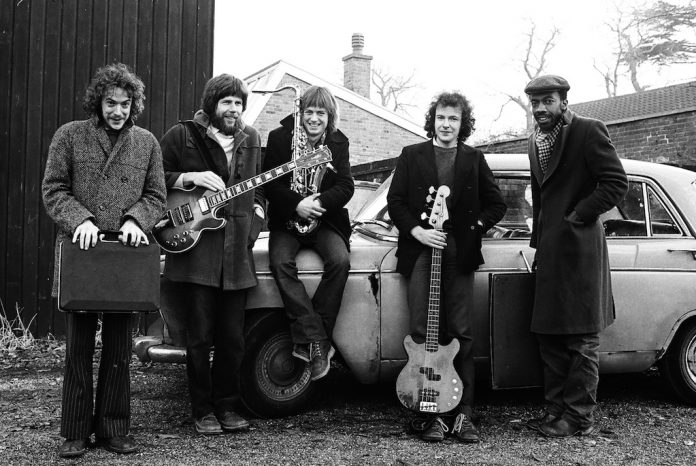
Stinky Winkles, winners of the 1979 G.L.A.A. young jazz musicians award, are a fine example of a fusion group whose approach is not governed by vulgar commerce. They have no recording contract so far (lack of commercial potential, rather than lack of talent) although they have made radio broadcasts and appear quite frequently at London venues. A five piece ensemble, their music is more eclectic than that of most fusion groups; for although jazz and rock are primary elements, they also draw from funk and free improvisation, along with concepts taken from 20th century ‘straight’ music. Most importantly, their sound is free from the unrelenting tyranny of rock rhythms, the artistic downfall of so many bands. They play mostly long compositions (sometimes lasting over an hour), incorporating well devised thematic material that serves as a loose sub-structure for their improvisational forays.
Much of the credit goes to the rhythm section of Cliff Venner, drums, and Dan Brown on electric bass. Both manipulate the often tricky changes of mood and tempo with flowing ease, rarely sounding rigid or formularised. The bassist, who has recorded with Gary Boyle, is able to provide walking patterns, funky riffs or free pointillistic colours to the collective whole. This capacity for variety is shared by the alto and tenor saxophonist Simon Picard (son of Johnny, the trombonist). Like so many of today’s young players he has yet to develop an individual style but possesses the technique and imagination that enables him to avoid most clichés or ill-considered ‘freak outs’.
The most impressive members of the quintet, however, are pianist Veryan Weston and guitarist Gary Peters. The former eschews the attractions of popular electric keyboards and has consequently been able to achieve a quite distinctive voice as a soloist. He can contribute a torrential hail storm of percussive atonal runs and firm left hand counterpoint although he sometimes lays out for long periods to listen to his fellows, or intelligently punctuates the musical narrative with concise melodic fragments. He has a background in various jazz groups, has recorded with Lol Coxhill, played with Trevor Watts and last year was awarded an arts grant to finish a book on piano improvisation.
Gary Peters has taught electric guitar and, like Weston, is well on his way to attaining a personal style. Though capable of the customary McLaughlinesque sewing machine bursts, he also utilises both Rypdal’s and Bailey’s freer vocabularies. He is a prolific composer, providing much of the band’s material; though it is important to emphasise that composition plays a subsidiary role here.
Winkles have some way to go before attaining a satisfactory balance between the various styles that their music encompasses – though hopefully there will be a greater emphasis on ‘group’ improvisation – and they are rather erratic in live performance. But the group show a commendable degree of thought and exploratory vigour, sadly missing from so many of their British and American counterparts, making them one of the best of the ‘newer’ fusion bands.















